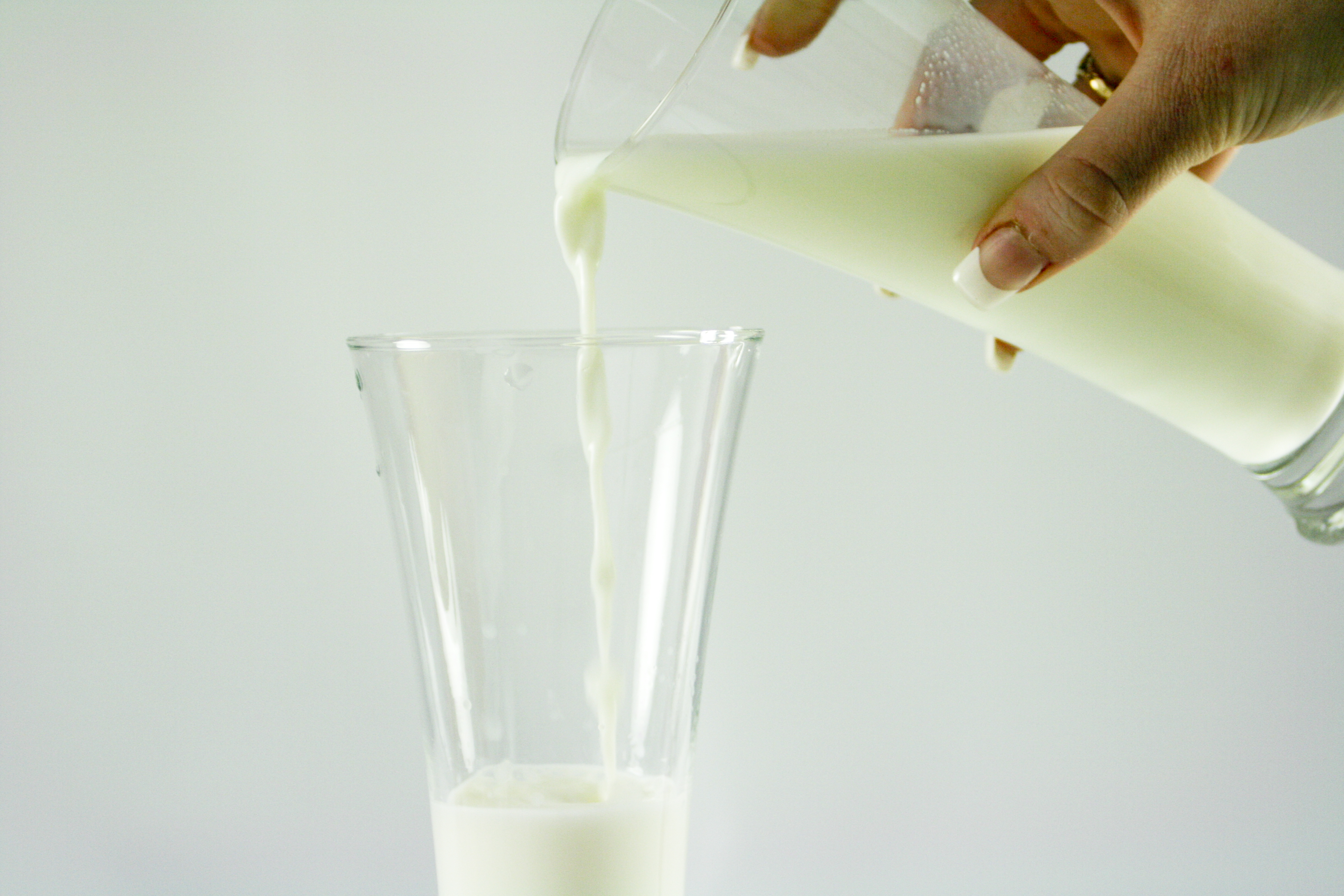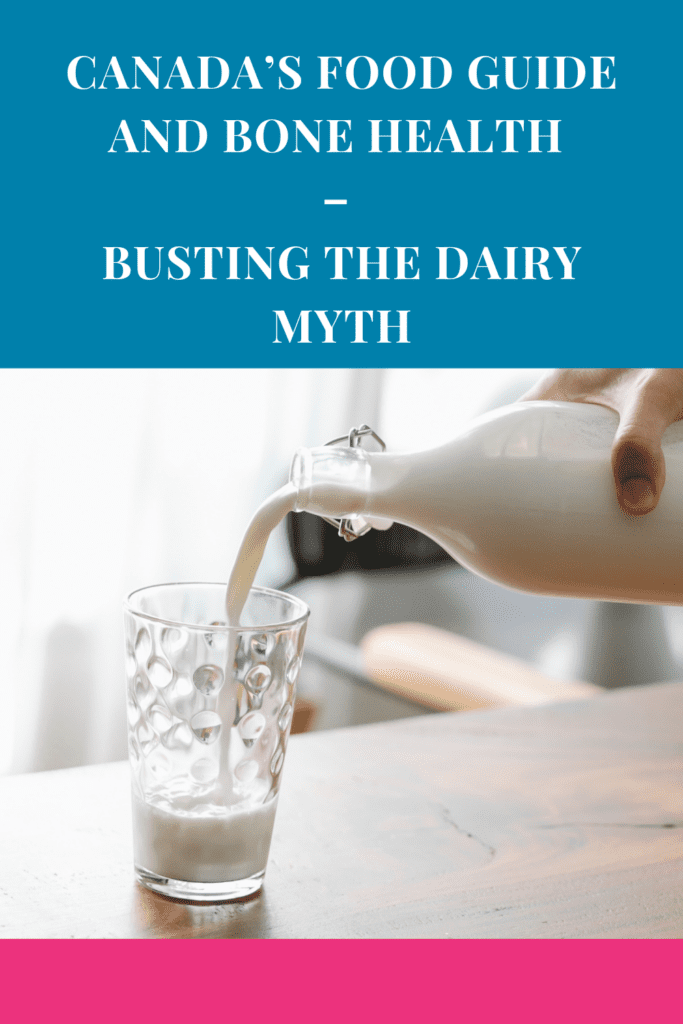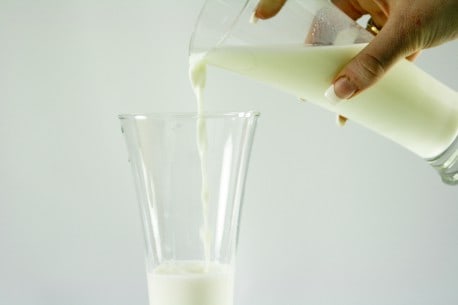The Canadian Food Guide has come under much scrutiny in recent years for being too high in dairy, red meat and insensitive to cultural differences. Thankfully, the Food Guide has gone through many modifications in the last decade. Many of the Food Guide’s limitations, both in the past and today, is largely due to pressure upon politicians by the Wheat, Dairy and Meat industries.
I will be the first to admit that upon looking at the latest Food Guide there is some improvement. Thanks to much persistence on behalf of health experts and nutritionists, there is some shift away from advising a diet high in ![ee-canadafoodguide[1]](https://lorrainedriscoll.com/wp-content/uploads/2015/03/ee-canadafoodguide1.jpg?w=232) grains, dairy and red meat. Nonetheless, there is still work to be done. What is most concerning with the Food Guide is that certain Food Groups are virtually invented. A group dedicated to dairy/calcium and another solely to grains is not based on any current science in the field of nutrition. We do not need grains or dairy to live a healthy life as certain groups of the past have shown us.
grains, dairy and red meat. Nonetheless, there is still work to be done. What is most concerning with the Food Guide is that certain Food Groups are virtually invented. A group dedicated to dairy/calcium and another solely to grains is not based on any current science in the field of nutrition. We do not need grains or dairy to live a healthy life as certain groups of the past have shown us.
We do know that each day we need:
- Protein – nuts, seeds, meat, legumes, tofu
- Healthy saturated and unsaturated fats – fish, seeds, nuts, olive, sesame and coconut oils
- Carbohydrates – Vegetables and some fruit (to acquire adequate vitamins, minerals and anti-oxidants and fiber) as well as moderate amounts of carbohydrates like quinoa and brown rice.
- Fiber– This is part of carbohydrates but also includes not only vegetables, fruits and grains but also legumes and nuts which are also protein.
Minerals: They do a Body Good – Calcium is not Queen
The Food Guide’s focus with calcium goes further than ignorance. An entire food group devoted to one of many minerals is further evidence of economic and political pressure from the dairy industry. The biggest bias or ‘favoritism’ with the Food Guide is that dairy is synonymous with calcium. ‘Milk Alternatives’ in the Food Group is given minimal attention. It only recommends drinking ‘fortified soy’ beverage if you do not consume dairy. Dairy is considered ideal as far as the Canadian Food Guide is concerned. Soy is advised to be used with caution by countless doctors and nutrition experts because of it’s estrogenic effects–it is not an ideal product to be consuming on a regular basis. Furthermore, there are other sources of calcium that are just as healthy that the guide fails to mention.
The Evolutionary Fallacy of the Dairy Myth
The fact is that marketing can be downright hypnotic and proof of this is that there are numerous minerals that the body needs, but the one that everyone knows about is calcium. Common sense would tell us that from an evolutionary perspective, we would not be dependent upon another mammal’s milk in order to be healthy. Further evidence of this truth is that many people throughout the world do not produce the enzyme lactase needed to digest dairy (the milk sugar known as lactose). In fact, many regions of the world have never consumed cow’s milk both in the past as well as today. The Native Americans of the past and many parts of Asia today are examples of this. Yet, ask anyone it’s iconic color and they will say “White. Milk white.”. Like many other minerals, calcium is required and can be adequately obtained from:
- cooked collard greens such as broccoli, bok choy, kale, turnip greens
- sesame seeds (think tahini or hummus)
- salmon and sardines
- dried figs
- black strap molasses
- almonds
These foods are abundant not only in calcium, but various other minerals that are needed for bone and overall body health.
The Surprising Truth About Bone Health
 Dairy is not the gold standard for calcium intake. The human body needs dozens of minerals in order to maintain its vital functions but calcium seems to have won the popularity contest. Minerals such as zinc, magnesium, selenium, iron, potassium, strontium, boron and sulfur to name a few. A deficiency in any one single mineral can result in anything from a minor health ailment to serious illnesses or even deadly consequences.
Dairy is not the gold standard for calcium intake. The human body needs dozens of minerals in order to maintain its vital functions but calcium seems to have won the popularity contest. Minerals such as zinc, magnesium, selenium, iron, potassium, strontium, boron and sulfur to name a few. A deficiency in any one single mineral can result in anything from a minor health ailment to serious illnesses or even deadly consequences.
We consume more dairy in the West than any where else in the world and yet we have the highest rates of osteoporosis. The World Health Organization released a report stating that Asian and African countries have the lowest rates of osteoporosis–where dairy consumption is minimal or totally non-existent. They also have half the rate of bone fractures compared to the West. Of course our bones require calcium, but dairy is not the only or best source of calcium. In his book, The Calcium Lie, Dr. Robert Thompson, M.D., writes that overconsumption of calcium in fact puts one at a higher risk of bone density loss and osteoporosis. Contrary to popular belief, the bones are made up of a multitude minerals–not simply calcium.
Why Do We have such a High Incidence of Osteoporosis?
Caffeine, sugar, soft drinks, table salt, alcohol, smoking and many medications cause calcium excretion from the bones and hinders calcium absorption. Other minerals, like magnesium are also excreted from the bones or not absorbed at all as a result of the above factors. Given our lifestyle in the West, it is easy to see why the West has the highest incidences of osteoporosis and fractures. An acidic diet (excess sugar and meat, processed foods and foods such as potato chips, fast food, soft drinks and french fries) all contribute to bone density loss. The minerals are leeched from the bones in order to be used by the body to neutralize the acidity.
A respected medical journal, Pediatrics, found in 2005 that there is little evidence to justify the recommendation that consumption of dairy products supports bone density. Living a healthy lifestyle and eating a balanced diet with plenty of vegetables and moderate amounts of protein is the most effective way to ensure you are obtaining all of the necessary minerals to foster bone health.
How Else Can You Improve Bone Health?
- Exercise is as imperative to bone health as a diet high in vegetables, some fruits and moderate protein. Bone mass is for the most part determined by your early thirties which is why it is important to obtain optimal bone mass in our teens and twenties and at best to maintain the bone mass we have thereafter, even if it isn’t ideal. Weight-bearing exercise like resistance training, yoga, aerobics and many other variations are crucial to maintaining or improving your bone density.
- Sunlight – Vitamin D – Calcium requires both magnesium and vitamin D to be absorbed. Without either, calcium can be deposited in incorrect parts of the body (think kidneys and kidney stones).
 If you’re still not convinced, then consider this. If the Food Guide is concerned about individual nutrients then it would be focusing on selenium and magnesium deficiency which is epidemic.
If you’re still not convinced, then consider this. If the Food Guide is concerned about individual nutrients then it would be focusing on selenium and magnesium deficiency which is epidemic.
Selenium is an antioxidant that is known to cut cancer rates, increase immunity and even halt AIDS. In certain areas in the US where cancer rates were found to be exceptionally high, researchers were stumped as to the cause until they started making the link between high cancer rates and selenium-depleted soils. When treating cancer, naturopaths check selenium levels and supplement accordingly. There is no food group devoted to selenium because its abundancy in certain foods is not in our economic interests–nor should it be.
While moderate amounts of dairy can be healthy for some to provide sufficient protein, fat and other nutrients–dairy is not a requirement for a healthy diet. There is no one magic mineral–we need them all.



One thought on “Canada’s Food Guide and Bone Health – Busting the Dairy Myth”
Hey Lorraine!
Some excellent points raised here. It’s good to see that there has been some improvement but, just like here in the UK, there’s still a looong way to go.
The advice here is very simple – Exercise and eat 5 portions of fruit/veg a day. Aside from barely a sentence of governmental ‘advice’ there is no focus or research led breakdown.
This is why articles like this one are worth their weight in Saffron 🙂
Keep up the good work,
Jennie x